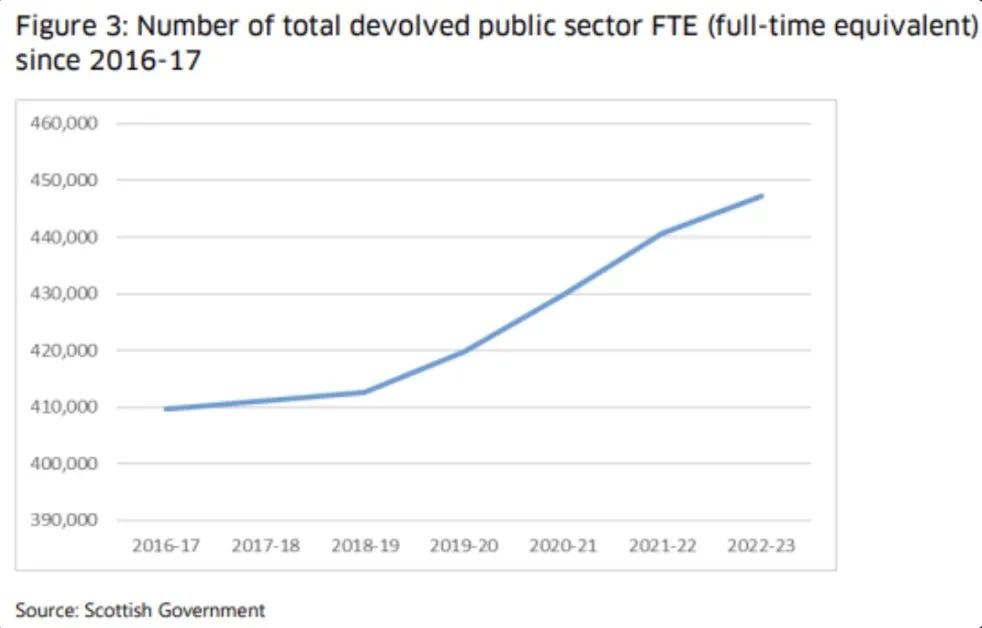SNP Trade Union Group motion excluded
An issue for all independence supporters and trade unionists
Some breaking news merits this extra (short) edition of Independence Captured.
Recently we took quite a detailed look at the Scottish Government’s spending plans.
The piece argued the following:
The Spending Review involves, among other things, massive cuts to the public sector. Before we get to the numbers, the framing of this strategy is just as important when it comes to understanding where the SNP are ideologically.
Kate Forbes, in her own words, invites Scotland’s public sector to:
"Consider scope for innovation that embraces entrepreneurship, improves values for money, offers opportunities for commercialisation, better manages assets & brings benefit to the public purse."
To translate, Forbes is arguing here not about “cutting cloth” due to funding pressures. Instead this is a deeply ideological move, and one that mirrors the approach of George Osborne. Nor is it the fabled “managerialism” that has come to define the SNP. This, is hard economic liberalism.
The objective of the Scottish Government is to shrink the size of the public sector, or in their words to “reset” it to pre-pandemic levels. In practice, the graph below shows this means the loss of between 30,000 and 40,000 jobs. The STUC have broken this down to suggest this includes: 13,300 NHS workers, 8000 local government workers, 5000 railway workers and 3700 civil servants (mainly delivering newly devolved social security powers).
In relation to this, former SNP MP George Kerevan, recently argued that theatre around an independence referendum could:
“…serve as a political cover to keep the pro-independence left in line while the SNP Government imposes swingeing real pay cuts in the public sector.”
This is a real dynamic, and one that is going to become more pronounced over the next year. Now we are seeing elements of it play out.
The First Minister gave the following response to questions about what the Scottish Government might do in relation to the cost of living crisis and the funding of local government:

There are two major problems with the position of the SNP leadership on these matters:
Their own plan for independence is based on Sterlingisation. This means that the UK Government and UK financial institutions will in effect retain economic control. It would mean borrowing would be set at a premium. Scotland would rely on private investment, rather than being able to mobilise the state-led interventions that are required if there is to be a serious rebuilding effort that prioritises workers and the environment.
There are lots of things the Scottish Government can do. They could have been generating revenues through a Land Value Tax. They could implement a rent freeze. They could have set up the National Energy Company. There are lots of things that could happen right now, which the SNP leadership have either stalled, suffocated or prevented from happening.
On the second point, the SNP Trade Union Group put forward a motion to the October party conference. They propose “creative and bold use” of the “wide range of tax powers” available to the Scottish Government. As they state, it has been excluded from the draft agenda.


The whole independence movement, and the Scottish trade union movement, should be aware of this development.
Lastly, if you are still labouring under the illusion that making criticisms like this is “undermining independence” I gently suggest that the best way to do that is to pursue the course of action currently being followed by the SNP leadership.




